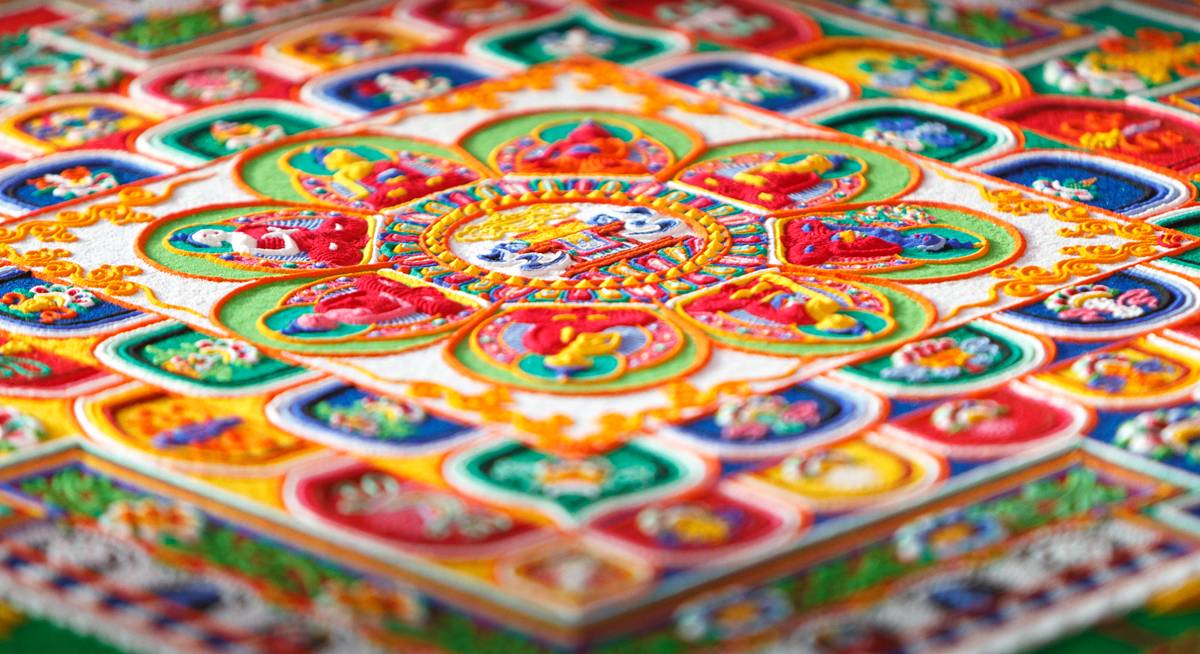Why Tibetan Monks Sweep Away Those Precious Mandalas
A seemingly incomprehensible act bears an important teaching.
Perhaps many of us are familiar with sand mandalas. They’re made, ritually, in some Tibetan Buddhist monasteries. Complex creations, they’re prized for their detail and the refinement of their development. They also bear a quality little understood outside of Buddhist belief. When the work is finished, often several days of work by numerous participating monks, the mandala is destroyed. This is often done with the same patience, even the same ritualism with which the mandala was drawn.
The act can seem incomprehensible to the Western mind where the notion of endurance is often a critical component of the work being carried out. Poems, paintings, sculptures, sometimes even the actions of our daily lives; our works are destined to outlive us, or so we believe. The idea fits well with the colloquial recommendation to “plant a tree, have a child and write a book,” three basic symbols of posterity.

But not so for Buddhism. Here the doctrine is that the transience of life teaches constant transformation and above all, that the real purpose of life is to rid oneself of the very “wheel of life.” The samsara is nothing more than the threshold of nirvana. Before enlightenment, is not what pales but when men would call a “work of art”?

When one of these mandalas is swept, the sand is poured into a container and this is wrapped in silk and deposited in a river, so that it arrives once more in the sea; a final metaphor for the return to that which truly matters in life.
Related Articles
When ancient rituals became religion
The emergence of religions irreversibly changed the history of humanity. It’s therefore essential to ask when and how did ancient peoples’ rituals become organized systems of thought, each with their
Seven ancient maps of the Americas
A map is not the territory. —Alfred Korzybski Maps are never merely maps. They’re human projections, metaphors in which we find both the geographical and the imaginary. The cases of ghost islands
An artist crochets a perfect skeleton and internal organs
Shanell Papp is a skilled textile and crochet artist. She spent four long months crocheting a life-size skeleton in wool. She then filled it in with the organs of the human body in an act as patient
A musical tribute to maps
A sequence of sounds, rhythms, melodies and silences: music is a most primitive art, the most essential, and the most powerful of all languages. Its capacity is not limited to the (hardly trivial)
The enchantment of 17th-century optics
The sense of sight is perhaps one the imagination’s most prolific masters. That is why humankind has been fascinated and bewitched by optics and their possibilities for centuries. Like the heart, the
Would you found your own micro-nation? These eccentric examples show how easy it can be
Founding a country is, in some ways, a simple task. It is enough to manifest its existence and the motives for creating a new political entity. At least that is what has been demonstrated by the
Wondrous crossings: the galaxy caves of New Zealand
Often, the most extraordinary phenomena are “jealous of themselves” ––and they happen where the human eye cannot enjoy them. However, they can be discovered, and when we do find them we experience a
Think you have strange reading habits? Wait until you've seen how Mcluhan reads
We often forget or neglect to think about the infinite circumstances that are condensed in the acts that we consider habitual. Using a fork to eat, for example, or walking down the street and being
The sky is calling us, a love letter to the cosmos (video)
We once dreamt of open sails and Open seas We once dreamt of new frontiers and New lands Are we still a brave people? We must not forget that the very stars we see nowadays are the same stars and
The sister you always wanted (but made into a crystal chandelier)
Lucas Maassen always wanted to have a sister. And after 36 years he finally procured one, except, as strange as it may sound, in the shape of a chandelier. Maassen, a Dutch designer, asked the










